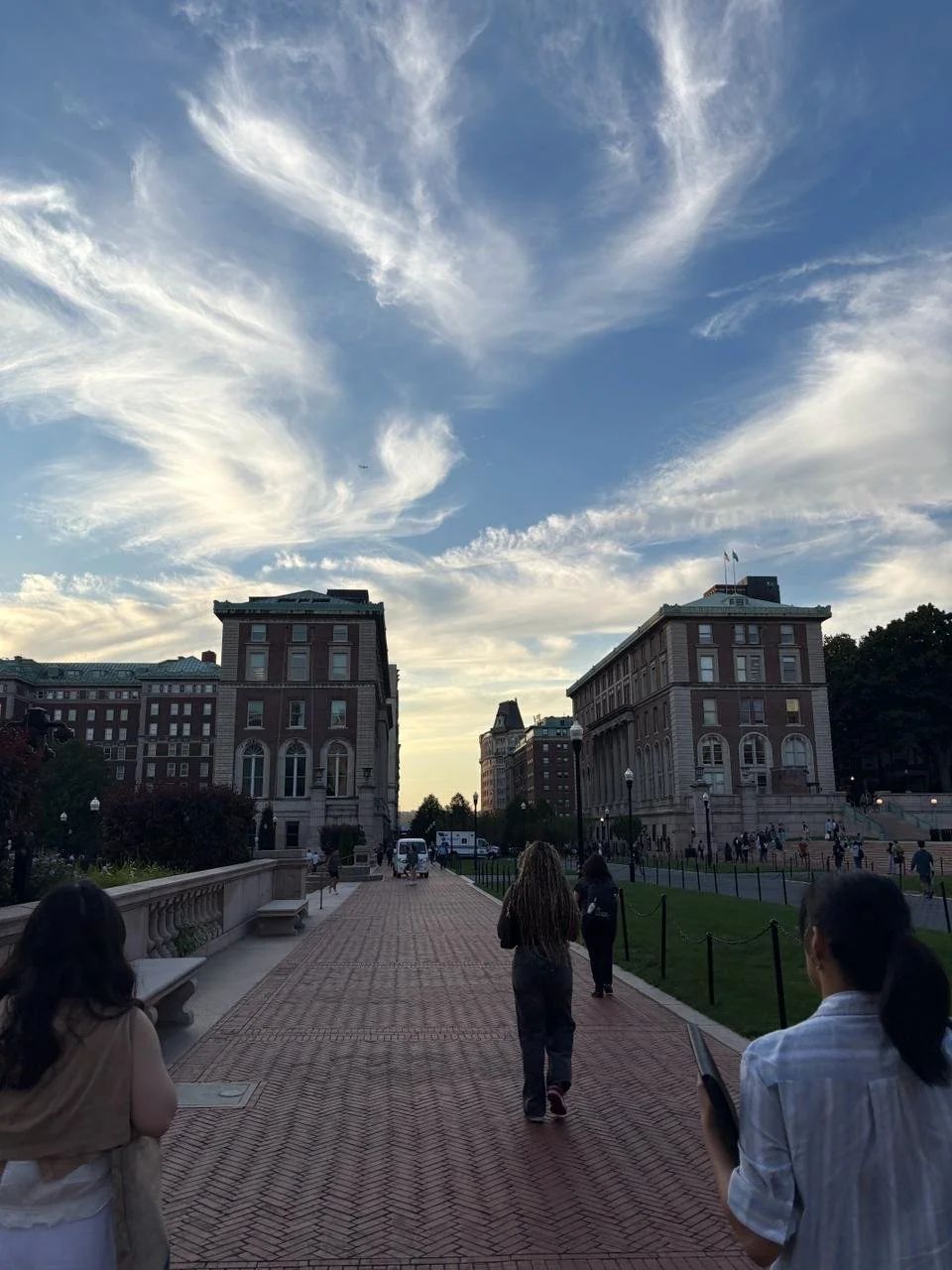First Month In Review: Waitlists, World Leaders, and (almost) Making It To Brooklyn
(Photo/Columbia University/Irmak Ersoz)
By Irmak Ersoz
Between chair shortages at Quant lectures and flowing Aperol spritzes at Amity Hall’s surprisingly long happy hour, we’ve made it through our first month at SIPA. Yet for many first-years, including me, it often still feels like the first day of classes. We’re still adjusting to IAB’s windowless classrooms and elevators that take you on a full tour of IAB every time you get on. But the real question is: how have the first-years’ first impressions fared? Here’s our first month in review.
Naturally, many of us arrived on campus wary of the image Columbia had projected at the end of last year. As an international student, I worried until orientation about simply walking through the gates. First-year MIA student Milly Church agreed: “My first impression was overwhelmingly negative considering the level of media attention Columbia was getting with regards to its capitulation to the Trump administration and also suppressing student protestors. But coming to the school in August for orientation brought a surprisingly good first impression; people were very welcoming, and it wasn’t hard to ease into the environment.”
That sense of excitement extended beyond orientation week; it lives and breathes in the eager conversations between classes in the IAB halls and impromptu lunch plans made when the morning Microeconomics section gets out. Though our schedules consist of core classes we’re dying to get out of the way, we’re still carving out time to build new friendships, even if it’s just in line to use the microwaves at Publique.
So far, I’ve been amazed at the breadth of experiences first-years have, whether it’s working on the Hill, teaching English, serving in the Air Force, or walking in fresh out of undergrad. But as first-year student and happy hour enthusiast Emma Seel puts it, we also have much in common: “Here for the first time, I’m surrounded by a bunch of other people that have been classified as the political or the policy friend. Now, we’re all in the same space, and we can have conversations that are so wonderfully in-depth because we all have a very strong foundational understanding of these concepts already and the things impacting our world.”
Being right at the center of where everything we care about is happening is pretty special. Fittingly, our first month collided with UNGA. We’re studying public policy a subway ride away from where it’s made. Student engagement is evident, from the security lines in front of the Low Library for the World Leaders Forum last week to the many stories of friends attending UNGA meetings. In the ever-changing policy times we live in, being able to keep the pulse of it so closely is a privilege.
While studying in NYC is thrilling, many first-years are struggling to fully experience the city. For many of us, the excitement blends with anxiety: too many problem sets to get done, too many school events to attend, and too little time to do it all. “How is it all going to get done?” is a question I heard frequently during my interviews. During our conversation, Emma echoed the same sentiment: “We get told that we’re supposed to create relationships with our classmates, our teachers, and network, but I’m not sure how we’re supposed to do that when we have zero time to even get through our own classes. Finding time for the gym and self-care is the hardest, mostly because of the time the program takes.”
Many of us have had a difficult time finding advice on how to manage these new burdens. The seeds of disorganization and chaos started blooming during orientation, frustrating many students, including Milly: “I think availability on the academic advisors' side was a glaring issue that hasn’t been resolved yet; it’s still very difficult to reach out to and get advice from academic advisors. The sheer size of our class has particularly made it difficult for them to accommodate all students and actually have the ability to give us one-on-one guidance.”
Milly’s uphill battle with academic advising reminded me of the long lines that stretched out the OSA door during orientation. As eager first-years attempted to make sense of an entirely new curriculum, so did their advisors. Waitlists filled up for required courses, and everyone’s two-year plans went out the window. We’re yet to see what happens in Subterm B, let alone the spring semester.
Yet, one theme threaded through all my interviews. Fellow MPA student Adela put it best: “Pressure is privilege.” Within SIPA and beyond, everything buzzes with possibility. These opportunities, however, come with their own anxieties: How do we do more? How do we do enough? How many coffee chats does it take to land an internship? How can I divide myself in three and attend a speaker series, recitation, and a dinner party? And when will I finally have time to go to Brooklyn? While I don’t have the answers yet, it’s certainly a privilege to get to find out.

